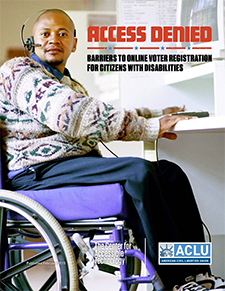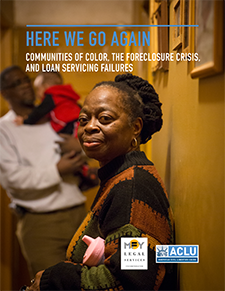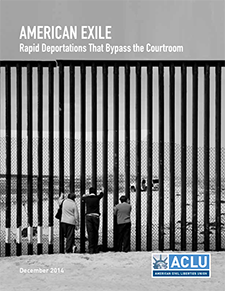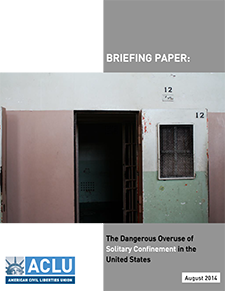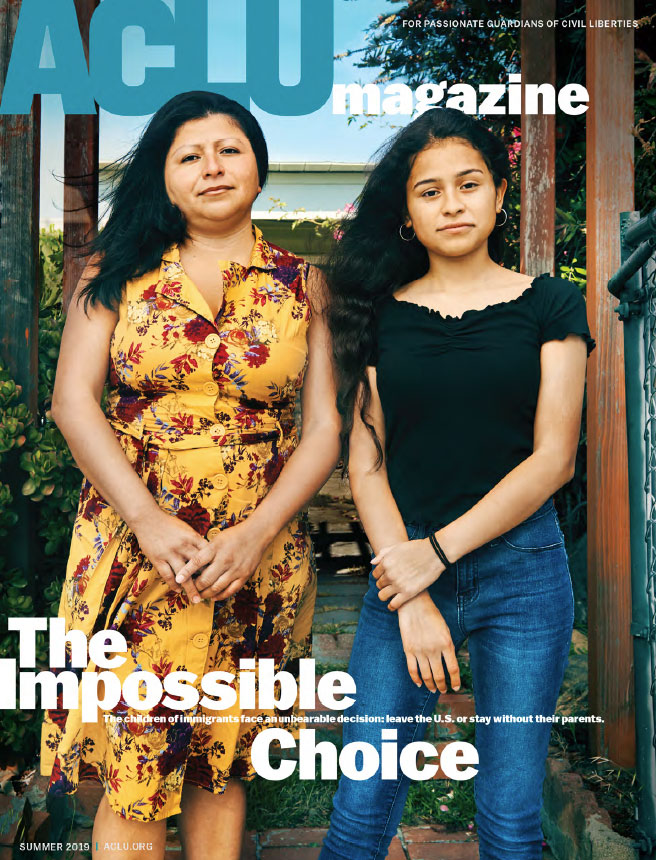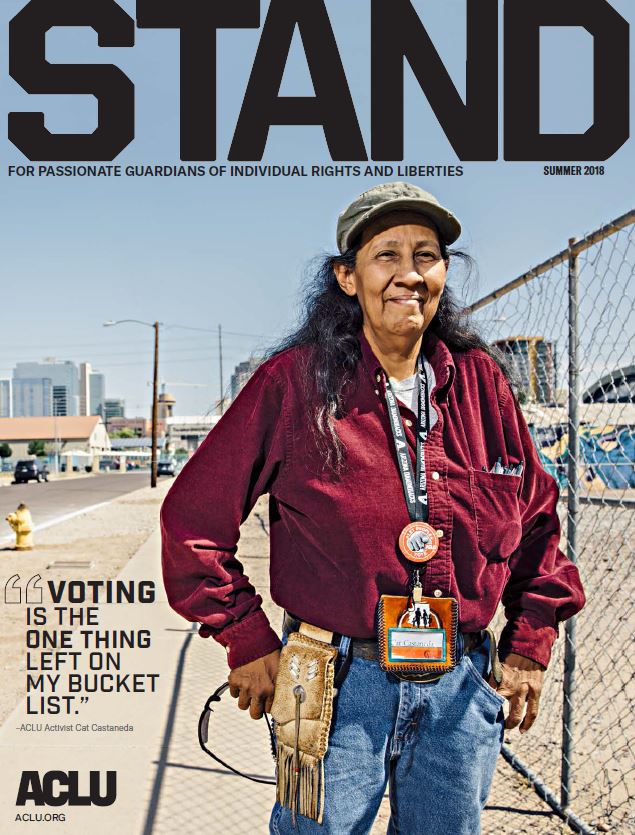Research & Publications
Access in-depth resources and analysis published by the ACLU regarding our most pressing civil liberties issues.
All Publications
Search will open in a new tab using DuckDuckGo
Access Denied: Barriers to Online Voter Registration for Citizens with Disabilities
Published by the ACLU and the Center for Accessible Technology, this report focuses on one urgent issue: the accessibility of online voter registration websites for voters with disabilities.
The Costs of Modernizing Voter Registration Systems: A Case Study of California and Arizona
This report by the Social Science Research Council commissioned by the ACLU found that making online voter registration accessible for Americans with disabilities can save millions of taxpayer dollars.
Here We Go Again: Communities of Color, the Foreclosure Crisis, and Loan Servicing Failures
During the subprime lending boom of the early 2000s, communities of color were targeted for the riskiest, most predatory mortgages. Since the housing bubble burst in 2008, homeowners in these communities have disproportionately struggled with default and foreclosure. These are the communities that most desperately need solutions to the foreclosure crisis. Instead, new data obtained from the Consumer Financial Protection Bureau (“CFPB”) by MFY Legal Services, Inc (“MFY”) and the American Civil Liberties Union (“ACLU”) supports the conclusion that loan modification programs are failing homeowners in communities of color.
This report’s analysis of CFPB mortgage complaint data reveals a pattern: complaints about harmful servicer misconduct, the kind that places homeowners at risk of losing their homes, make up a larger share of complaints from communities of color than from predominately white communities.
We recommend concrete steps that federal, state, and local authorities must take to expose, address, and ultimately correct disparities in the way mortgage relief is reaching communities of color. These actions are crucial to ensure that communities of color are not, once again, bearing the brunt of systemic failures.
View the CFPB data here (.xls).
American Exile: Rapid Deportations that Bypass the Courtroom
In 2013, the United States conducted 438,421 deportations. In more than 363, 2793 of those deportations—approximately 83 percent—the individuals did not have a hearing, never saw an immigration judge, and were deported through cursory administrative processes where the same presiding immigration officer acted as the prosecutor, judge, and jailor. Some of those expelled without a hearing had lived in the United States for many years, have U.S. citizen children, and were never afforded the opportunity to say goodbye to relatives or call an attorney before being wrenched from their lives rooted in American communities. Some of those deported were fleeing violence, persecution, or torture and were turned back to danger. Others had lawful status in the United States, including U.S. citizenship, but were erroneously deported.
Executive Summary
Key Recommendations
Methodology
- Summary Deportation Procedures: An Introduction
- Who Is Getting Deported Without a Hearing?
- After Deportation: The Aftermath of an Unfair Removal
- International Law and Restrictions on Summary Removals
The Dangerous Overuse of Solitary Confinement in the United States
Over the last two decades, the use of solitary confinement in U.S. correctional facilities has surged.
Before 1990, “supermax” prisons were rare. Now, 44 states and the federal government have supermax units, where prisoners are held in extreme isolation, often for years or even decades. On any given day in this country, it’s estimated that over 80,000 prisoners are held in isolated confinement.
This massive increase in the use of solitary has happened despite criticism from legal and medical professionals, who have deemed the practice unconstitutional and inhumane. It’s happened despite the fact that supermax prisons typically cost two or three times more to build and operate than traditional maximum-security prisons. And it’s happened despite research suggesting that supermax prisons actually have a negative effect on public safety.
As fiscal realities are forcing us to cut budgets for things like health and education, it is time to ask whether we should continue to use solitary confinement despite its high fiscal and human costs.
This briefing paper provides an overview of the excessive use of solitary confinement in the U.S. and strategies for safely restricting its use.
ACLU Magazine
Published twice a year, ACLU Magazine shares updates on the ACLU’s critical litigation and advocacy work across the country and tells the stories of the activists, attorneys, and clients at the heart of each case and campaign. To receive ACLU Magazine by mail, become a monthly donor today.
Stay Informed
Sign up to be the first to hear about how to take action.

